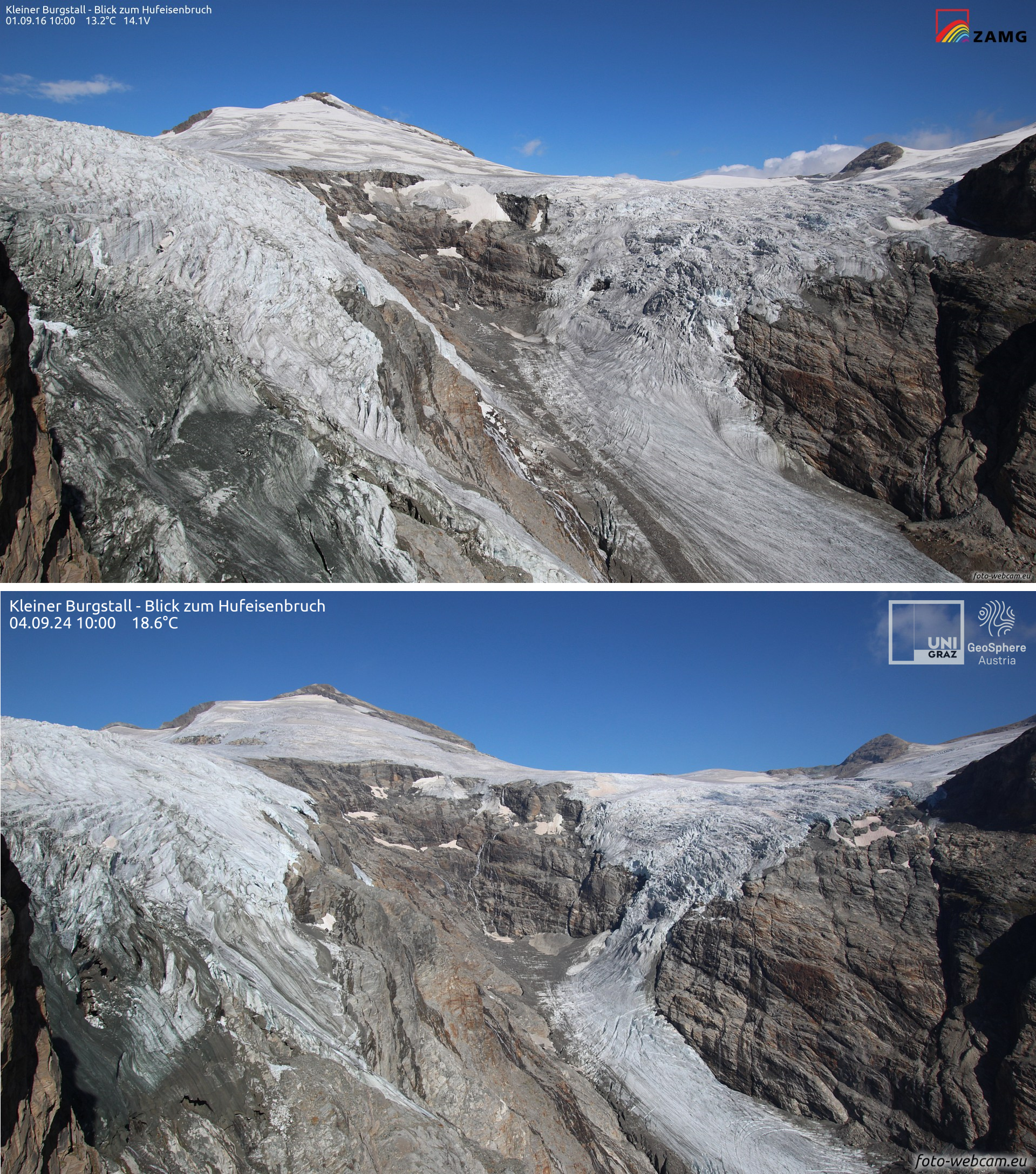Pasterze Likely to Soon Lose Its Status as Austria’s Largest Glacier
Austria's largest glacier, the Pasterze at the foot of the Großglockner, is regularly measured by GeoSphere Austria and loses an average of one to two meters of ice thickness per year, up to ten meters in its lower section.
The year 2025 has been declared the ‘International Year for the Preservation of Glaciers’ by the United Nations. Starting this year, March 21 is also recognized as ‘World Glacier Day.’ Additionally, March 22 marks ‘World Water Day,’ and March 23 is ‘World Meteorology Day.’
On the occasion of these three days, GeoSphere Austria summarizes the key facts from its regular measurements of the Pasterze Glacier, where the connections between glaciers, water, and meteorology/climate are clearly evident.
The Pasterze is Austria’s largest glacier, located east of the Großglockner, the country’s highest mountain. Its length changes have been regularly measured since the late 19th century. Since 1980, its mass balance has been measured annually, initially by Tauernkraftwerke AG (now Verbund) and since 2004 by GeoSphere Austria.
‘Once or twice a year, we determine the mass change on the Pasterze and two glaciers in the Sonnblick region,’ explains Bernhard Hynek from GeoSphere Austria. ‘We measure ice melt and snow depth at several points. Additionally, radar and seismic methods are used to measure the remaining ice thickness, and drones track the annual ice loss. A weather station on the ice and several automatic cameras are also part of the glacier monitoring system.’
Although heavy snowfall in winter provides a significant mass gain for glaciers, summer weather is more crucial for their long-term development in Austria. ‘What matters most is whether occasional cold air intrusions in summer bring snow to the glaciers,’ says glaciologist Bernhard Hynek from GeoSphere Austria. ‘A fresh, bright white snow cover reflects nearly 100 percent of solar radiation, protecting the glacier from melting for up to a week. A glacier without fresh snow is much darker, absorbs much... In the wake of significant climate warming in recent decades, precipitation during the summer half-year is increasingly falling as rain rather than snow, even at Austria’s highest elevations. This accelerates the melting of Austria’s glaciers.’
With an area of approximately 15 square kilometers, the Pasterze is Austria’s largest glacier. Its average ice thickness across the entire glacier is currently around 40 meters. Over the past 20 years, GeoSphere Austria’s measurements have shown an average annual ice thickness loss of about 1.5 meters. In the years 2022, 2023, and 2024, the glacier lost more than two meters of ice thickness per year.
The melting is particularly striking at the long glacier tongue of the Pasterze, which is well known through many public images. The tongue extends down to approximately 2,100 meters above sea level and is currently losing around five meters of ice thickness per year, with up to ten meters lost in its lowest section.
‘The lower part of the Pasterze, meaning the prominent glacier tongue, will largely disappear by 2050,’ says Bernhard Hynek from GeoSphere Austria, ‘while the higher glacier sections of the Pasterze will persist in a much smaller form for a longer period.’
It is also becoming apparent that in the coming years, the connection between the lower and upper sections of the Pasterze will disappear due to continued melting. ‘If the connection to the upper Pasterzenkees, the so-called Hufeisenbruch, completely breaks in the next few years, the lower glacier section would be classified as a separate glacier,’ explains glaciologist Hynek. ‘In that case, the Pasterze would no longer be Austria’s largest glacier, and the Gepatschferner in Tyrol would take its place.’
The ongoing monitoring of glaciers and snow cover on the Pasterze and the Sonnblick glaciers is part of the World Meteorological Organization’s (WMO) Global Cryosphere Watch program.
Video Pasterze. Development from 1850 to the Present: Cross-section through the lower part of the Pasterze glacier tongue. The value for 1850 was reconstructed and represents the maximum extent after the end of the Little Ice Age. The values from 1969 onward were derived from digital elevation models. Source: GeoSphere Austria
Video Pasterze Hufeisenbruch. Time-lapse from 2016 to 2024: At the Hufeisenbruch, the connection between the lower and upper parts of the Pasterze glacier is gradually dissolving. Source: GeoSphere Austria
Video Pasterze Glacier Tongue. Time-lapse from 2016 to 2024: The Pasterze glacier tongue is losing significant ice thickness each year. Source: GeoSphere Austria

